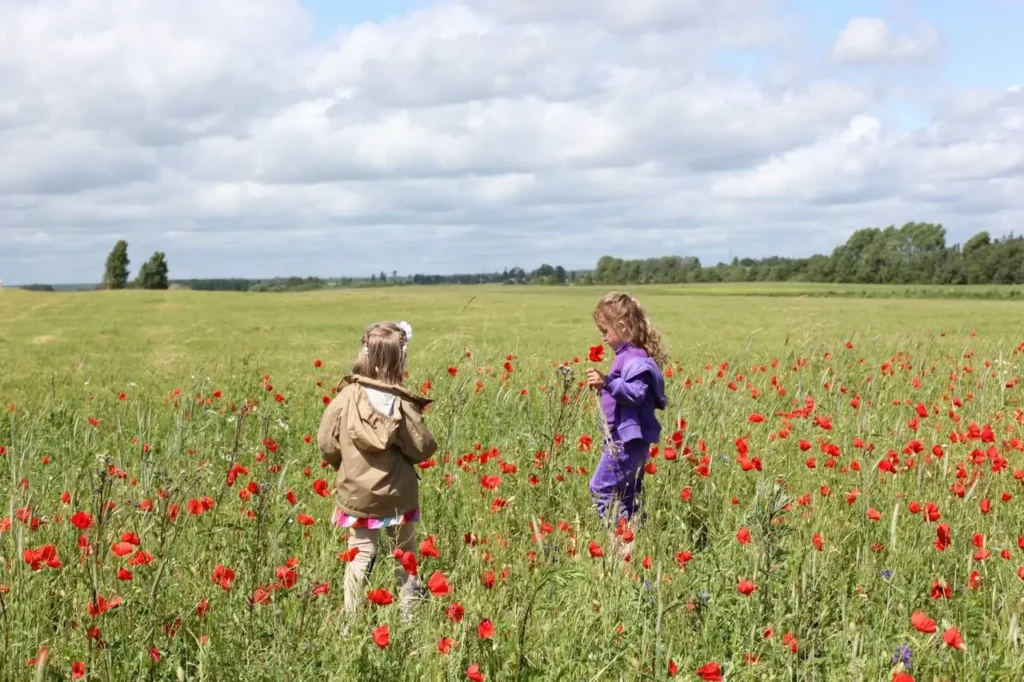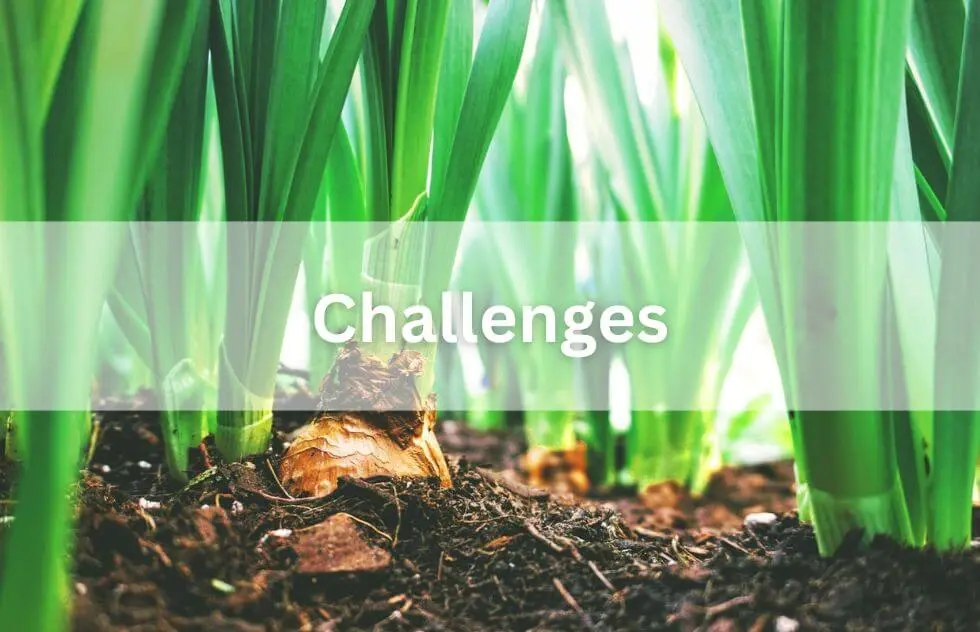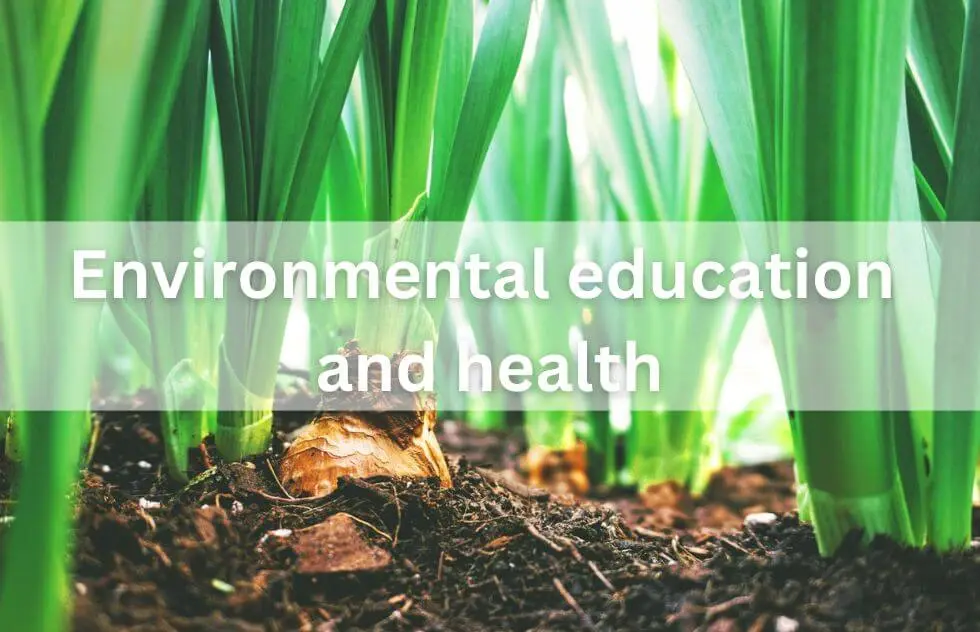How healthily we live depends not only on nutrition and exercise, but also on our knowledge about the environment. In a world shaped by climate change, environmental pollution and resource scarcity, environmental education is becoming immensely important. It not only imparts ecological knowledge, but also skills that have a direct impact on our health.
In this article, we show how environmental education contributes to health prevention, which target groups benefit the most, and which concrete measures are already having an effect today – in schools, cities and even within the healthcare system.

What is environmental education, actually?
Environmental education is not a luxury, but a necessity. In a world where ecological crises have become part of everyday reality, we need not only technical solutions, but also people who understand how their actions are connected to the environment. This is precisely where environmental education comes in.
Definition and goals
Environmental education includes all educational processes that enable people to understand ecological interrelationships, reflect on them critically, and derive responsible action from them. It goes far beyond traditional school knowledge. It is not just about how a tree works, but also about how our consumption threatens forests and what we can do about it.
A central goal is to promote skills for sustainable lifestyles. This includes:
- Systemic thinking: How are climate change, energy consumption and health connected?
- Future-oriented action: How can we use resources without exhausting them?
- Value orientation: What role do justice and shared responsibility play?
These goals are closely linked to the concept of Education for Sustainable Development (ESD), which is being advanced internationally by UNESCO. ESD calls on us to view global challenges in a holistic way and to act locally.
Historical development of environmental education
The roots of environmental education go back to the environmental movements of the 1970s. During this time, the first initiatives emerged that focused on nature conservation, biodiversity and human responsibility for the environment. Environmental education back then was often shaped by the natural sciences and concentrated on preserving individual habitats.
Over time, however, it became clear: it’s about more than that. The major environmental problems – climate change, species extinction and the flood of plastic – are man-made and deeply rooted in the economy, politics and society. This is why environmental education evolved into sustainability-oriented education that links ecological, social and economic dimensions.
An important milestone was Agenda 21 from the UN Conference in Rio in 1992. Since then, environmental education has been internationally recognized as a key to sustainable development and has been increasingly anchored in curricula, educational policies and political strategies.
Forms and approaches of environmental education
Environmental education is diverse. It doesn’t just take place in the classroom, but everywhere people learn and act. There are several different approaches:
- Formal education:
In schools and universities, environmental education is increasingly being integrated – for example in science, biology, geography or ethics. Innovative curricula combine theoretical knowledge with practical projects, such as waste separation at school, energy experiments or field trips. - Informal education:
Museums, zoos, environmental centers and NGOs offer workshops, guided tours or experience days. This form is particularly effective because it combines learning with personal experience – for example, when examining water samples under a microscope or building an insect hotel. - Non-formal education:
Environmental education processes also take place in adult education, clubs or companies – for instance through sustainability trainings, workshops or CSR initiatives in businesses.
Beyond that, digital environmental education is becoming more and more important: platforms, apps, podcasts or online courses reach new target groups and make environmental knowledge easily accessible. They can provide an entry point but need to be well guided to ensure real understanding.
All of these approaches have one thing in common: they not only aim to convey knowledge, but also to motivate and enable people to reflect on and change their behavior. Only then can education become a real lever for a healthy environment and a healthy life.

Health between environment and education
Health is often seen as an individual asset, influenced by factors such as diet, exercise, sleep or genetic disposition. But this view falls short. Our health does not emerge in a vacuum. It is embedded in the environment in which we live, as well as in the knowledge we have about it. This is exactly where environment and education intersect. The environment influences our health, and education determines whether we can recognize this and know how to deal with it.
Environmental factors as health risks
Air, water and soil – everything we breathe, drink or eat has a direct impact on our bodies. Environmental factors have long been recognized as health risk factors. According to the World Health Organization (WHO), around 24% of all deaths worldwide are attributable to environmental causes. This means: almost one in four deaths would be avoidable if the environment were healthier.
Air pollution, for example, is a silent killer. Particulate matter, ozone and nitrogen oxides can cause asthma, chronic bronchitis, heart attacks and strokes. Children, older people and individuals with pre-existing conditions are particularly at risk.
Noise pollution is also often underestimated. Persistent traffic noise has been proven to increase the risk of high blood pressure, sleep disorders and depression. On top of that comes the chemical burden from microplastics, pesticides or hormone-disrupting substances that enter our bodies through food and everyday products, and whose long-term effects are still hardly foreseeable.
Climate change adds another layer as a multiplier of health risks. Heatwaves, new infectious diseases, extreme weather events and psychological stress caused by environmental disasters affect not only distant countries, but also Europe. The environment is not a side issue of health, but a central stage.
Education as a protective factor
We are not only protected from these environmental hazards by technology and policy, but also by education. Those who are informed about risks can make conscious decisions and protect themselves better. Education thus becomes a preventive shield.
A simple example: anyone who knows how air quality is measured avoids heavily trafficked roads when jogging. Anyone who understands the effects of heat can actively protect himself in summer by airing rooms properly, drinking enough, wearing appropriate clothing and seeking out cool places. This knowledge can be life-saving – especially for high-risk groups.
But education goes beyond self-protection. It promotes social awareness of environmental issues. It strengthens the ability to identify grievances, become politically active and initiate change in one’s local community. In short: environmental education turns passive victims into active agents of change.
In addition, it supports professionals – for example in medicine, nursing or urban planning – in taking environmental factors into account in their work. In the long term, this can change entire systems and make them more robust in terms of health.
Inequality and environmental justice
However, the following holds true: not all people are affected to the same extent or have the same opportunities to protect themselves. This is where the concept of environmental justice comes into play.
Social inequality means that disadvantaged groups often live in residential areas with poor air quality, few green spaces and high levels of noise. At the same time, they often have less access to health-relevant education, for example due to a low level of formal education, language barriers or limited media literacy.
This means that environmental pollution coincides with social disadvantage – and this results in massive health risks. People with low incomes are more likely to suffer from diseases linked to environmental factors. However, they often lack the means or the knowledge to protect themselves.
Environmental education can make a crucial contribution to justice. It must be targeted specifically where environmental and health risks are particularly high – for example in disadvantaged neighborhoods, at schools with a high proportion of students with a migration background, in social work or in health centers. It is important that education not only informs, but also empowers – through practical, real-life-oriented offerings and genuine participation.

How environmental education strengthens health in concrete terms
The impact of environmental education on our health is not abstract; it shows up very concretely in everyday life. Environmental education changes perspectives, encourages action and teaches skills that help us live healthier lives. It has an effect on the individual level, by leading to conscious decisions, and on the societal level, by helping to shape new health-promoting structures. In this section, we present three central mechanisms of action.
Promotion of health-conscious behavior
Environmental education creates the basis for smart everyday decisions that often influence our health more than we think. Those who understand the connections between environment and health develop an awareness of causes and consequences and adjust their behavior accordingly.
Example: Nutrition:
People who engage with pesticide residues, CO₂ footprints or industrial livestock farming are more likely to choose locally produced, seasonal and organically grown food. These are not only more environmentally friendly, but often also healthier, as they contain fewer additives, have a higher nutrient content and lower levels of contaminants.
Example: Mobility:
Anyone who knows about the health risks of car emissions is more likely to switch to cycling or use public transport. This not only reduces air pollution, but also promotes physical fitness and reduces stress.
Example: Housing and consumption:
Environmental education raises awareness of harmful substances in everyday products, for example in furniture, cleaning agents or cosmetics. Informed people pay more attention to labels, question packaging and prefer environmentally and health-friendly alternatives.
In short: environmental education is not a moral club, but a tool to live more autonomously, healthily and sustainably.
Connection between experiences of nature and mental health
Countless studies show that our psyche needs nature. Yet many people are not aware of this connection at all. Environmental education can help here by conveying the value of nature – not only ecologically, but also emotionally and in terms of health.
Numerous scientific findings show that:
- Spending time in green spaces lowers cortisol levels (the stress hormone)
- Nature promotes recovery, attention and creativity
- Physical activity in natural environments improves mood and reduces anxiety
- Even just looking at trees or plants out of the window can have a measurably positive effect
Environmental education makes these effects tangible – above all through nature-based forms of learning:
- Forest education: children not only learn to identify species, but also experience calm, adventure and a sense of self-efficacy.
- Outdoor projects: young people experience how liberating it is to work in the forest without a smartphone – and what it means to take responsibility for a piece of nature.
- Guided nature walks for adults: especially in stressful phases of life, consciously perceiving nature can be a form of mental relief.
By experiencing and reflecting on such moments, environmental education promotes resilience, mindfulness and psychological stability – skills that are becoming increasingly important in an overstimulated, digital world.
Children and adolescents: early education, long-term impact
Children are not only particularly vulnerable to environmental stressors, but also especially receptive to new perspectives. Environmental education that begins early can establish sustainable patterns of behavior that last a lifetime.
Why this is so crucial:
- Children learn through experience, not through appeals. Environmental education creates genuine “aha” moments: the moment a child sees a seed turn into a plant stays with them.
- A sense of connection to nature that is nurtured early on often goes hand in hand with a later, healthy lifestyle – conscious consumption, outdoor activity, an interest in nutrition.
- Environmentally aware children also influence those around them: parents, siblings, friends. They ask questions, provide impulses – and thus help to multiply environmental knowledge.
Concrete approaches that have proven effective:
- School gardens: here, it’s not just about gardening, but also about learning, harvesting and eating together – with a direct link to health.
- Forest days in kindergarten: they promote motor skills, the immune system and social behavior.
- Participatory projects: when children are allowed to have a say in designing the schoolyard (e.g. more trees, raised beds, shaded areas), they develop a sense of responsibility – and identification.
In the long term, environmental education leads to better health behavior in children, greater environmental awareness and a stronger sense of self-efficacy. They grow up with the understanding: “I can make a difference – for myself and my environment.”
Environmental education is an effective approach to health promotion. It does not rely on prohibitions or lecturing, but on information, experience and motivation. It gets people moving – physically, mentally and socially. And it creates something that no medication can replace: a healthy relationship with the world we live in.

Practical examples: where environmental education and health come together
The theory is convincing – but what does environmental education look like in practice when it actually promotes health? This section uses concrete projects to show how environmental knowledge is brought to life, how well-being improves, and how entire living environments change. Whether in schools, cities or the healthcare sector – wherever people come into contact with environmental education, new spaces for a healthy life emerge.
School projects and “green classrooms”
When biology lessons take place in the school garden, environmental education not only becomes more vivid, but also has a direct positive impact on children’s physical and mental well-being. “Green classrooms” are open learning spaces outdoors, such as schoolyards with planted islands and seating circles under trees, or learning trails through the forest.
Health effects:
- More physical activity through outdoor activities
- Less stress and better concentration through contact with nature
- Stronger social skills through group work in a natural environment
- Support for the immune system and motor development, especially in younger children
Concrete examples:
- In many German cities – e.g. Freiburg, Berlin or Leipzig – there are now school garden programs funded by local authorities.
- The “Eco-School in Europe” initiative honors schools that integrate Education for Sustainable Development into everyday school life. Health often plays a central role here – for example in projects on healthy eating, waste reduction or climate-adapted school design.
Result:
Children not only learn how plants grow, but also how they themselves are connected to their environment – physically, emotionally and socially. This has positive effects on their health.
Urban gardening and health promotion in cities
Between concrete, glass and asphalt, vegetables are growing. Urban gardening is more than just a trend: it is an effective tool for environmental education, social participation and health promotion. Especially in densely populated neighborhoods with few green spaces, community gardens create a new quality of life.
How it works:
- People grow fruit, vegetables and herbs together – right on their doorstep
- Environmental education happens on the side: through sharing knowledge, workshops and gardening together
- At the same time, these places become spaces for physical activity, social encounters and relaxation
Health benefits:
- Fresh food = better nutrition = less obesity, diabetes and deficiencies
- Gardening reduces stress, increases physical activity and boosts life satisfaction
- Intercultural projects promote social health and integration
Example projects:
- The “Prinzessinnengärten” in Berlin-Kreuzberg show how vacant lots can be transformed into ecological learning spaces – with workshops, hands-on activities and educational programs for schools and refugees.
- “Edible City Andernach”: here, urban green spaces are consistently used to grow fruit, vegetables and herbs for everyone. Environmental education takes place through guided tours, hands-on activities and information boards – health promotion through healthy food and new spaces for encounters.
Conclusion:
Urban gardening shows that environmental education can take place right in the middle of everyday life – without wagging a moral finger, but with a big impact on body, mind and community.
Programs in healthcare (e.g. “nature on prescription”)
The realization that there is a connection between environment and health has now also reached the healthcare system – albeit still cautiously. In some countries there are already “green prescriptions”: prescriptions for spending time in nature that are taken just as seriously as medication.
What is behind this?
- Doctors, therapists or social workers specifically recommend activities in nature – e.g. walks, gardening, spending time in the forest
- These recommendations are part of treatment plans, for example for depression, burnout, obesity or cardiovascular diseases
- They are often complemented by educational offerings: guided nature walks, wild herb courses, mindfulness training in the forest
International pioneers:
- In the UK there is the state-supported “Social Prescribing” program, in which patients are referred to nature projects, sports groups or environmental workshops.
- In Sweden and Norway, “forest therapies” have become established as recognized measures in mental health care.
Initial approaches in Germany:
- In Baden-Württemberg, some clinics are testing cooperations with nature parks in which patients are prescribed targeted stays in green spaces.
- Projects such as “Green Care” or “GartenTherapie” link environmental education with therapy – for example for people with dementia, chronic illnesses or a history of addiction.
Why this works:
- Nature activates the body’s self-healing powers and reduces the need for medication
- Environmental education imparts knowledge about the healing effects of nature – and motivates long-term behavior change
- Patients feel taken seriously because they learn that they can actively do something for their own health
Summary:
These practical examples show that environmental education is not only an educational goal, but also a health-promoting factor in everyday life. In schools, cities and even in medical practice, the understanding is growing that environmental knowledge is health knowledge. Wherever people learn together how closely environment and health are connected, new paths to a better life emerge.

Challenges and obstacles
As great as the potential of environmental education for health promotion may be, in reality it often reaches its limits. The idea is convincing and the positive effects are proven. Nevertheless, implementation in many places remains patchy, sporadic or short-lived. Why is that?
Three central challenges currently prevent environmental education from fully unfolding its health-promoting potential on a broad scale: lack of structural support, insufficient social awareness and the high complexity of the content.
Lack of institutional support
One of the biggest brakes is the insufficient anchoring of environmental education in the fields of education and health. Environmental education is still too often seen as a “nice-to-have,” as something you do when there is time and money left over. The result is often temporary, underfunded projects that are carried by individuals with a lot of idealism.
Concrete structural problems:
- In schools, there is a lack of professional development for teachers who could implement environmental education in a holistic way.
- In the healthcare system, there are hardly any institutionalized interfaces with environmental education – even though the connections have long been known.
- Funding is often project-based and time-limited – which prevents the development of sustainable structures.
- Many educational institutions struggle with staff shortages and overload – environmental education is then pushed to the back of the line.
What is missing is a systematic approach:
Environmental education should be included as a mandatory component in curricula, municipal development, public health strategies and urban planning. Without political backing, it remains a patchwork – well-intentioned, but not sustainable.
Lack of awareness in the general population
Although environmental education is scientifically sound and socially meaningful, it is not given the importance it deserves among the general public. Many people see environmental and health issues as separate from one another or postpone them for later.
Typical mental blocks:
- “This doesn’t affect me directly.”
Many people underestimate how strongly environmental conditions influence their own health – because the effects are gradual or not visible. - “I can’t change anything anyway.”
Climate change seems overpowering, environmental problems appear complex – this creates a sense of helplessness rather than willingness to act. - “Education is the school’s job.”
Environmental education is often reduced to the school context, even though it concerns people of all ages.
On top of this, there is a general lack of trust in science and educational institutions. This is further intensified by disinformation, polarization and social media. Environmental education needs to communicate in a way that is more tailored to specific target groups, more connected to everyday life and more emotionally intelligent in order to reach more people.
Complexity of the topics
Another obstacle is the complexity of the content. The interface between environment and health is not easy to convey. It requires interdisciplinary thinking, a systemic understanding and the ability to recognize long-term connections. All of these are skills that are often lacking in everyday life.
Examples of this complexity:
- The connection between air pollution and mental illness is scientifically proven – but hard to grasp.
- Climate impacts such as heat stress act indirectly, occur differently from region to region and require both individual and societal adaptation.
- Health risks from microplastics, noise or chemicals are real but not visible – which makes them difficult to communicate.
Educational concepts therefore need to be rethought:
- Away from traditional lecturing, towards dialog-based, participatory formats
- Away from abstract data, towards everyday examples and personal relevance
- Away from siloed disciplines, towards interdisciplinary cooperation – e.g. between doctors, educators, urban planners and environmental experts
Only when environmental education is understandable, accessible and practical can it change awareness and thus have an impact on health.
Conclusion on the challenges:
Environmental education faces a dilemma: although it could achieve a great deal, it is often pursued only half-heartedly. The key lies in a clear political commitment, in institutional anchoring and in communication that meets people where they are. As long as this is lacking, its potential will remain largely unused.
Environmental education as the health literacy of the future
Environmental education cannot replace medicine, but it does help to avoid harmful environmental influences. And that is often the best path to health. At a time when prevention is becoming increasingly important, environmental education is more than just an educational offering: it is an investment in quality of life.
Societies that take environmental education seriously create informed and healthy citizens. It is time to view environmental education not only as an educational issue, but also as part of a future-oriented health policy.

FAQ – Frequently asked questions about environmental education and health
What is meant by environmental education?
Environmental education imparts knowledge about ecological interrelationships and promotes responsible action. The goal is to strengthen sustainable lifestyles and enable people to recognize environmental problems and develop solutions.
How does the environment affect our health?
Air pollution, noise and pollutants, but also access to nature, have a direct impact on our physical and mental health. Environmental factors are partly responsible for numerous acute and chronic diseases.
Why is environmental education particularly important for children?
Environmental knowledge acquired at an early age shapes later behavior. Children also benefit health-wise from physical activity, contact with nature and conscious nutrition, all of which are supported by environmental education programs.
Is there environmental education in the healthcare system?
In some cases, yes – for example through projects such as “nature on prescription” or health-oriented nature therapy. However, this area is still in its early stages and holds great potential.
How can I become active myself?
You can make use of local environmental education offerings, get involved in environmental or health initiatives, or start with small changes in everyday life – for example through sustainable consumption, spending time being active in nature and critical media consumption.
This post is also available in Deutsch.

